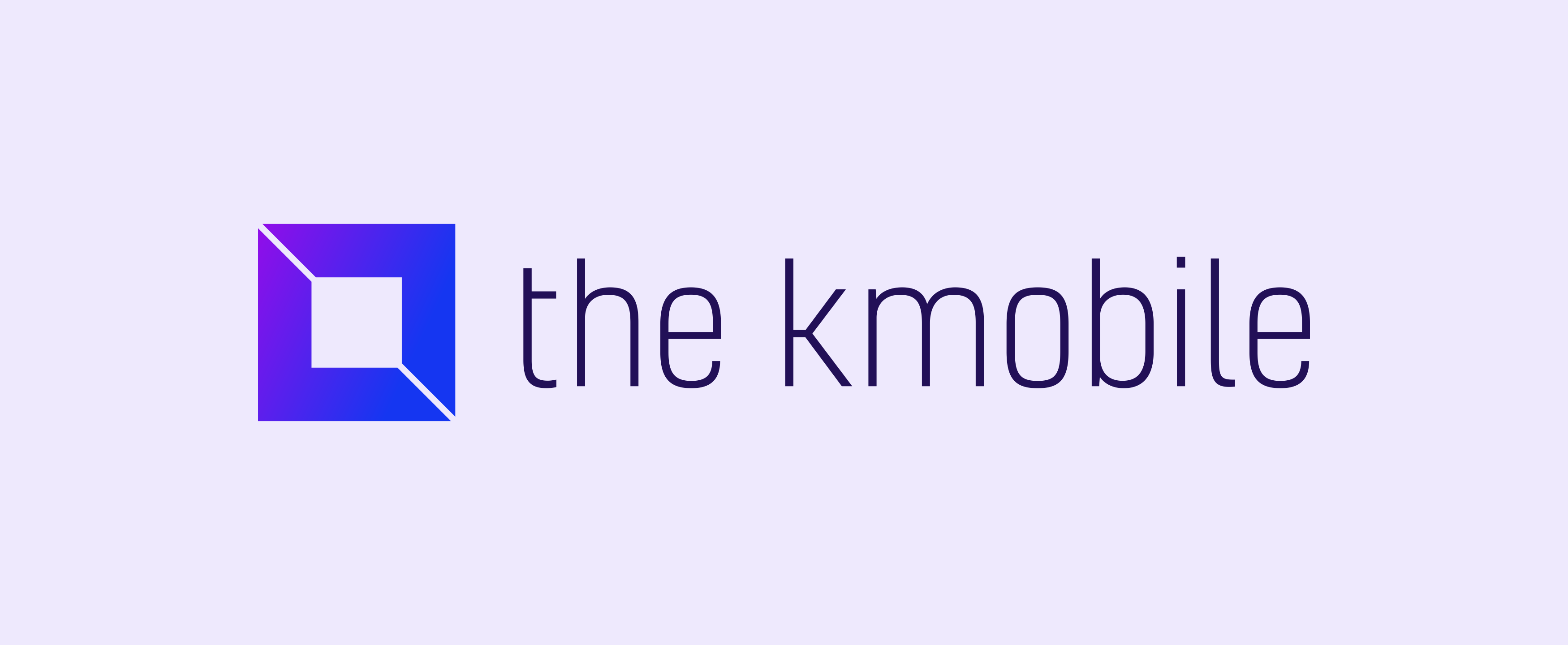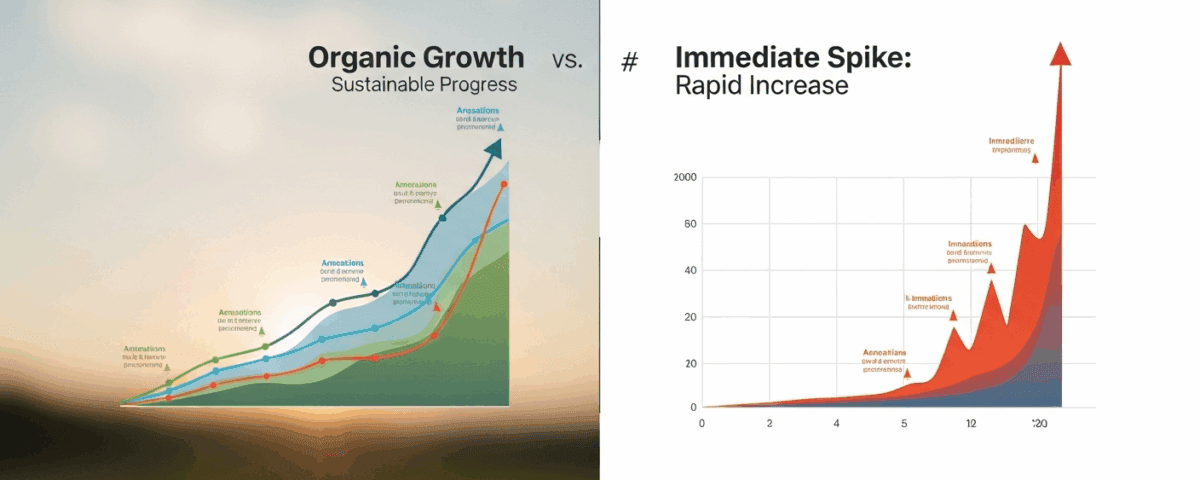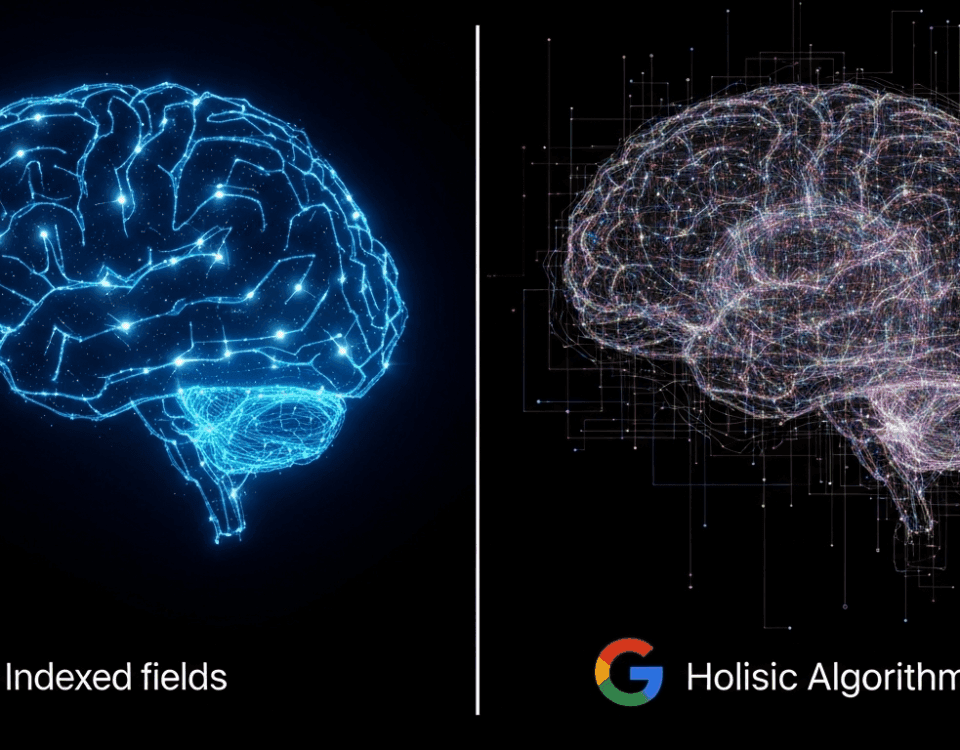
The Complete Guide to App Store Optimization (ASO) in 2025: Boost Your App’s Visibility
August 7, 2025Key Takeaways
Choosing between App Store Optimization (ASO) and paid advertising isn’t about picking one over the other – it’s about understanding when and how to use each strategy effectively. Here’s what you need to know when:
- ASO delivers sustainable organic growth: While slower to show results, ASO provides long-term, cost-effective visibility that compounds over time without ongoing ad spend.
- Paid advertising offers immediate impact: Perfect for launching new apps, testing markets, or achieving quick user acquisition goals with predictable ROI.
- The optimal approach is hybrid: Successful apps combine both strategies, using paid ads for immediate results while building organic visibility through ASO.
- Budget allocation matters: Allocate 70-80% of your marketing budget to ASO for sustainable growth, with 20-30% for paid advertising to accelerate results.
- Success metrics differ: ASO success is measured in organic rankings and sustainable growth, while paid advertising focuses on immediate conversions and ROI.
By understanding the strengths and limitations of each approach, you can create a balanced strategy that maximizes your app’s growth potential while optimizing your marketing budget.
Understanding the Fundamentals: ASO vs. Paid Advertising
What is App Store Optimization (ASO)?
App Store Optimization is the process of improving your app’s visibility in app store search results through organic means. Think of it as SEO for mobile apps – you’re optimizing your app’s metadata, visual assets, and user experience to rank higher in search results without paying for placement. For more detail check this post.
Key characteristics of ASO:
- Organic visibility: Appears in search results based on relevance and quality
- Long-term results: Takes 2-6 months to see significant improvements
- Cost-effective: No ongoing ad spend required
- Sustainable growth: Results compound over time
- Quality users: Organic users tend to have higher retention rates
What is Paid Advertising?
Paid advertising in the app space includes Apple Search Ads, Google Ads, social media advertising, and other paid channels that allow you to bid for visibility and immediate user acquisition.
Key characteristics of paid advertising:
- Immediate results: Can drive downloads within hours of launching
- Predictable ROI: Clear cost-per-acquisition (CPA) metrics
- Scalable: Can increase or decrease spend based on performance
- Targeted reach: Precise audience targeting capabilities
- Ongoing costs: Requires continuous budget allocation
When to Use ASO: The Organic Growth Strategy
Perfect Scenarios for ASO-First Approach
1. Long-term App Success
If you’re building an app for sustainable, long-term success, ASO should be your primary strategy. Apps like tryAstro demonstrate how organic optimization can drive consistent growth without relying on continuous ad spend.
2. Limited Marketing Budget
When you have a constrained marketing budget, ASO provides the best return on investment. The initial investment in optimization tools and expertise pays dividends over months and years.
3. High-Quality User Acquisition
Organic users typically have higher retention rates and lifetime value. They discover your app through search, indicating genuine interest in your app’s functionality.
4. Competitive Markets
In highly competitive app categories, paid advertising costs can be prohibitively expensive. ASO allows you to compete on quality and relevance rather than budget.
ASO Success Metrics
Track these metrics to measure ASO effectiveness:
- Organic keyword rankings for target terms
- Organic download volume over time
- Conversion rate from store visits to downloads
- User retention rates for organic vs. paid users
- Cost per organic acquisition (COA)
ASO Timeline and Expectations
Month 1-2: Initial optimization and baseline establishment
Month 3-4: First ranking improvements and organic traffic growth
Month 5-6: Significant organic download increases
Month 6+: Sustainable, compounding growth
When to Use Paid Advertising: The Accelerated Growth Strategy
Perfect Scenarios for Paid-First Approach
1. App Launches and Product Launches
When launching a new app or major feature, paid advertising can create immediate awareness and drive initial downloads to establish momentum.
2. Time-Sensitive Campaigns
For seasonal promotions, limited-time features, or competitive opportunities, paid advertising provides the speed and control needed.
3. Market Testing
Use paid advertising to test new markets, audiences, or messaging before committing to long-term ASO strategies.
4. Revenue-Generating Apps
Apps with high lifetime value (LTV) can afford higher customer acquisition costs (CAC) and benefit from immediate user acquisition.
Paid Advertising Success Metrics
Track these metrics to measure paid advertising effectiveness:
- Cost per acquisition (CPA)
- Return on ad spend (ROAS)
- Click-through rate (CTR)
- Conversion rate from ad to download
- User quality and retention rates
Paid Advertising Timeline and Expectations
Day 1: Campaign launch and initial performance data
Week 1: Optimization based on early results
Month 1: Stable performance and scaling opportunities
Ongoing: Continuous optimization and budget management
The Hybrid Approach: Combining ASO and Paid Advertising
Why Hybrid Strategies Work Best
The most successful apps don’t choose between ASO and paid advertising – they use both strategically. Here’s how to combine them effectively:
1. Foundation Building with ASO
Start with ASO to establish your app’s organic presence and credibility. This creates a solid foundation that makes your paid advertising more effective.
2. Accelerated Growth with Paid Advertising
Use paid advertising to complement your organic efforts, targeting keywords where you’re not yet ranking organically.
3. Data-Driven Optimization
Use insights from paid advertising to inform your ASO strategy. Keywords that perform well in paid campaigns should be prioritized in your organic optimization.
Budget Allocation Guidelines
For New Apps (0-6 months):
– 60% ASO (long-term foundation)
– 40% Paid Advertising (immediate growth)
For Growing Apps (6-18 months):
– 70% ASO (sustainable growth)
– 30% Paid Advertising (accelerated expansion)
For Established Apps (18+ months):
– 80% ASO (maintaining market position)
– 20% Paid Advertising (targeted campaigns)
Cost Comparison: ASO vs. Paid Advertising
ASO Investment Breakdown
Initial Setup Costs:
– ASO tools and software: $200-500/month
– Professional optimization services: $2,000-10,000
– Visual asset creation: $1,000-5,000
– Total initial investment: $3,200-15,500
Ongoing Costs:
– Tool subscriptions: $200-500/month
– Content updates and optimization: $500-2,000/month
– Total ongoing costs: $700-2,500/month
Cost per organic acquisition: $0.50-2.00
Paid Advertising Investment Breakdown
Apple Search Ads:
– Average cost per tap: $0.50-2.00
– Average conversion rate: 10-30%
– Cost per acquisition: $5-20
Google Ads:
– Average cost per click: $0.50-3.00
– Average conversion rate: 8-25%
– Cost per acquisition: $6-25
Social Media Advertising:
– Average cost per click: $0.50-2.50
– Average conversion rate: 5-20%
– Cost per acquisition: $8-30
ROI Comparison Over Time
ASO ROI Timeline:
– Month 1-3: Negative ROI (investment phase)
– Month 4-6: Break-even
– Month 6+: Positive ROI with compounding returns
Paid Advertising ROI Timeline:
– Day 1: Immediate ROI (if properly optimized)
– Ongoing: Consistent ROI based on campaign performance
Real-World Case Studies
Case Study 1: tryAstro’s Hybrid Success
tryAstro, a travel planning app, demonstrates the power of combining ASO and paid advertising effectively:
ASO Strategy:
– Focused on high-intent travel planning keywords
– Optimized for seasonal travel trends
– Built strong organic rankings for core terms
Paid Advertising Strategy:
– Used Apple Search Ads to target competitive keywords
– Launched seasonal campaigns for peak travel periods
– Tested new markets before organic expansion
Results:
– 300% increase in organic downloads over 12 months
– 40% reduction in overall customer acquisition costs
– 60% of users acquired through organic channels
– 25% higher retention rates for organic users
Case Study 2: Gaming App Launch
A mobile gaming company used a paid-first approach for their new game launch:
Strategy:
– Heavy paid advertising during launch week
– ASO optimization running in parallel
– Gradual reduction in paid spend as organic grew
Results:
– 50,000 downloads in first week (80% paid)
– 6 months later: 100,000 monthly downloads (70% organic)
– 65% reduction in marketing costs over 6 months
Decision Framework: When to Choose Each Strategy
Choose ASO When:
✅ You have a limited marketing budget
✅ You’re building for long-term success
✅ Your app has high user lifetime value
✅ You’re in a competitive market with high ad costs
✅ You want sustainable, compounding growth
✅ User quality and retention are priorities
Choose Paid Advertising When:
✅ You need immediate results
✅ You have a generous marketing budget
✅ You’re launching a new app or feature
✅ You need to test markets quickly
✅ You have time-sensitive campaigns
✅ You can afford higher customer acquisition costs
Choose Hybrid When:
✅ You want the best of both worlds
✅ You have moderate marketing budget
✅ You’re building a sustainable business
✅ You want to accelerate growth while building foundation
✅ You need both immediate and long-term results
Implementation Strategy: Getting Started
Phase 1: Assessment and Planning (Week 1-2)
1. Audit your current situation
* Evaluate existing ASO performance
* Review current paid advertising campaigns
* Assess marketing budget and goals
2. Define success metrics
* Set specific KPIs for each channel
* Establish timeline expectations
* Create measurement framework
3. Choose your approach
* Decide on ASO-first, paid-first, or hybrid
* Allocate budget accordingly
* Set up tracking and analytics
Phase 2: Implementation (Week 3-8)
If ASO-First:
– Conduct keyword research and competitor analysis
– Optimize app metadata and visual assets
– Set up ASO tools and tracking
– Begin content optimization
If Paid-First:
– Set up advertising accounts and campaigns
– Create compelling ad creatives
– Launch initial campaigns
– Monitor and optimize performance
If Hybrid:
– Implement both strategies simultaneously
– Use paid insights to inform ASO
– Balance budget allocation
– Track performance across channels
Phase 3: Optimization and Scaling (Week 9+)
1. Analyze performance data
* Compare ROI across channels
* Identify optimization opportunities
* Adjust budget allocation
2. Scale successful strategies
* Increase investment in high-performing channels
* Optimize underperforming areas
* Expand to new opportunities
3. Continuous improvement
* Regular performance reviews
* Stay updated on industry trends
* Adapt strategies based on results
Common Mistakes to Avoid
ASO Mistakes
❌ Expecting immediate results – ASO takes time to show significant improvements
❌ Ignoring user experience – Poor app performance hurts organic rankings
❌ Keyword stuffing – Modern algorithms penalize obvious optimization
❌ Neglecting reviews and ratings – User satisfaction directly impacts rankings
❌ Set-it-and-forget-it approach – ASO requires ongoing optimization
Paid Advertising Mistakes
❌ Not tracking ROI properly – Focus on lifetime value, not just acquisition cost
❌ Poor targeting – Wasted budget on irrelevant audiences
❌ Ignoring ad fatigue – Users become less responsive to repeated ads
❌ Not testing creatives – A/B testing is essential for optimization
❌ Over-reliance on paid – Sustainable growth requires organic foundation
Hybrid Strategy Mistakes
❌ Treating channels independently – Integrate insights across both strategies
❌ Inconsistent messaging – Maintain brand consistency across organic and paid
❌ Poor budget allocation – Balance short-term and long-term goals
❌ Not measuring cross-channel impact – Understand how channels work together
Future Trends: The Evolving Landscape
ASO Evolution
AI-Powered Optimization: Machine learning algorithms are making ASO more sophisticated and automated.
Voice Search Integration: Optimizing for conversational queries and voice assistants.
Personalization: App stores are becoming more personalized, requiring targeted optimization strategies.
Paid Advertising Evolution
Privacy-First Advertising: Adapting to new privacy regulations and reduced tracking capabilities.
Automated Bidding: AI-powered bid management for optimal performance.
Cross-Platform Attribution: Better understanding of user journeys across multiple touchpoints.
The Future of Hybrid Strategies
Integrated Platforms: Tools that manage both ASO and paid advertising from a single dashboard.
Predictive Analytics: Using data to predict optimal budget allocation and strategy adjustments.
Real-Time Optimization* Instant adjustments based on performance data and market conditions.
Conclusion
The choice between ASO and paid advertising isn’t binary – it’s about understanding your goals, budget, and timeline to create the optimal strategy for your app’s success.
Key Takeaways:
1. ASO provides sustainable, cost-effective growth but requires patience and ongoing effort
2. Paid advertising delivers immediate results but requires continuous budget allocation
3. Hybrid strategies offer the best of both worlds for most apps
4. Success depends on proper implementation** and continuous optimization
5. The landscape is constantly evolving – stay informed and adapt accordingly
Whether you choose ASO, paid advertising, or a hybrid approach, the key is to start with a clear strategy, measure your results, and continuously optimize based on data. Apps like [tryAstro](https://tryastro.com) demonstrate that with the right approach, you can achieve sustainable growth while building a strong foundation for long-term success.
Remember: there’s no one-size-fits-all solution. Your strategy should be tailored to your specific goals, budget, and market conditions. Start with what makes sense for your situation, measure your results, and adjust your approach based on what you learn.
FAQ
For most apps, allocate 70-80% of your marketing budget to ASO for sustainable growth, with 20-30% for paid advertising to accelerate results. New apps might start with 60% ASO and 40% paid, while established apps might use 80% ASO and 20% paid.
ASO typically takes 2-6 months to show significant improvements, with first results appearing in 2-4 weeks. The timeline depends on competition level, optimization quality, and app category.
While possible, most successful apps use both strategies. ASO-only approaches work for apps with limited budgets and long-term focus, while paid-only approaches work for apps with high LTV and immediate growth needs.
Track both individual channel performance (organic rankings, paid ROI) and overall business metrics (total downloads, user acquisition costs, retention rates). Focus on the combined impact rather than individual channel performance.
The biggest mistake is treating them as mutually exclusive options. The most successful apps use both strategically, with ASO building long-term foundation and paid advertising accelerating growth and testing opportunities.





